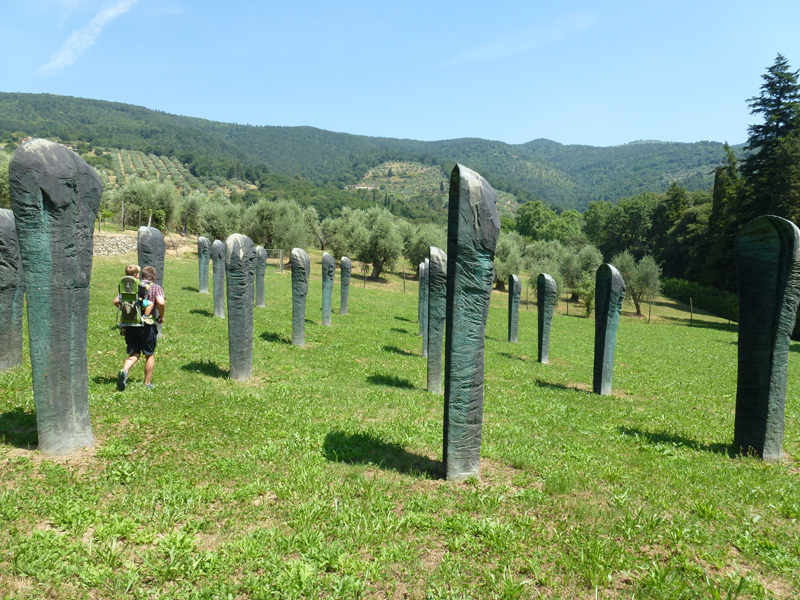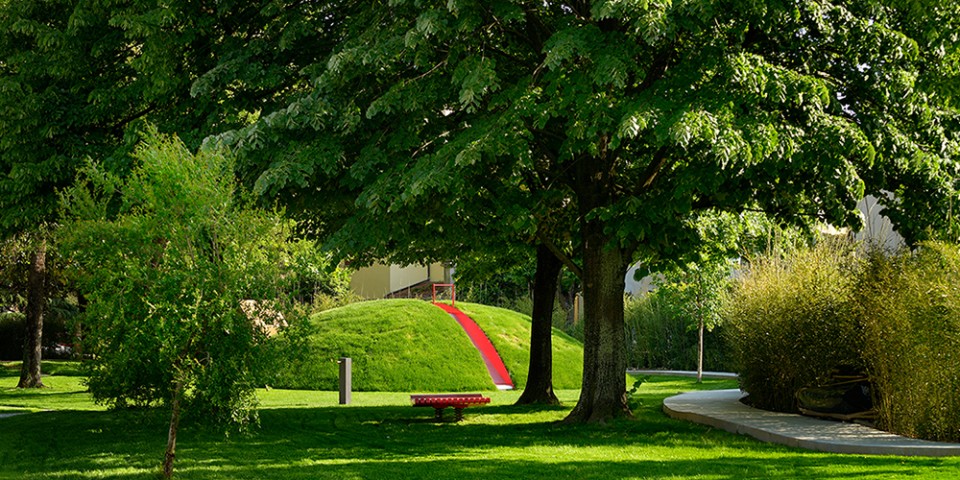
When my family and I visited the Gori Collection, we learned about the children’s tours designed by Stefania Gori. We took the general tour with our kids, but I saw pictures of children touching and playing with some of the artworks in their bookstore. They were engaging nature and art by pulling out sounds, textures, and movements from each piece. The book documenting their art and education initiatives is only in Italian, so Stefania Gori answered a few questions for me here.

Karen Brummund: Why did you start hosting tours for children at the Gori Collection?
Stefania Gori: In guiding adults through their tours of the collection I was able to experience a bit of everything: specialists, enthusiasts and people new to art. Among the latter I always noticed a kind of distrust in regards to contemporary art and a skepticism that kept them from fully understanding and enjoying the tour. At what point was this prejudice formed and what have been the shortcomings of the schools and institutions? This closed off attitude was not determined by the level of education of a person. Knowing this, led me, in the early 2000s, to turn to children and schools. From the very beginning my work aimed to engage both the children and the teachers.
KB: What is different about a tour for children than adults?
SG: I have found that children react in a very open minded manner, they let themselves be involved from the beginning and are ready to fully embrace the experience.
KB: Can you tell us about one specific way that you play with the art and the children on the tour?
SG: When I first thought about a tour of the park for children I thought of two elements: bringing out a strong excitement from the children and creating the tour with the help of people working in theatre and academia. Together with the aforementioned people, we organized a journey which remained faithful to the contents and story of the artwork but which was presented in an unusual way. In fact, he/she who accompanies the children is not to explain or tell them anything, their job is simply to help the children discuss and understand what they are seeing. The information is given instead by a mime who appears only near the artworks when they are reached. With gestures alone, the mime builds a relationship between the children and the work of art. The guide listens to the reactions had to the mime and asks the children what they saw and noticed. The meeting with the artwork has to be enveloped in awe and wonder. I always thought: an unforgettable tour, a nice memory of a museum will plant a seed in a child which has the potential to grow.
KB: Can you tell us about your newest project, The Flying Garden?
SG: I worked with the aforementioned method for several years, improving it and bringing it to other museums with different paths which were open also to adolescents and even adults. Eventually, I became interested in working directly with artists to create works of art in public places accessible to children accompanied by adults. This time, the idea was that to be able to consider art a true pleasure of life one must be able to enjoy it daily. Therefore, I started to think about public sculptures that can be played with. The first work to come from this idea was a gigantic music box which, at the press of a button, told a story and moved Sandra Tomboloni’s artwork within it. It told the story of Rapunzel. After this, I was invited to plan a full public playground for the city of Pistoia; Il Giardino Volante (The Flying Garden). This playground was built for children to play in but designed by artists. The result was a playground where children play with/in/on sculptures.

KB: What are your priorities when choosing artists for the garden?
SG: I was careful to choose artists who are not necessarily easy to comprehend but who maintain a poetic view in regards to life which can be reconciled with children’s view of the world.
KB: Is there anything else you want to add about the value of playing with art?
SG: Playing with art, being around it makes you grow up to have a more open mind and freedom in the face of the many conditioning messages of the world. In a utopia, museums would become the places most visited for leisure. Less malls, more museums.
KB: What is your favorite children’s book?
SG: I’m tuscan so I grew up reading Carlo Collodi’s Pinocchio.
KB: What is a recent art book you are reading?
SG: A series of books published by L.B. Tauris: Art & Death by Chris Townsend, Art & Science by Sian Ede, and Art & Laughter by Sheri Klein.
KB: When you were a child, who was your favorite artist or what was your favorite artwork?
SG: A monumental sculpture found in the garden of the Kröller-Muller museum in Holland: Jardin d’Email by Jean Dubuffet, when I was younger, climbing on it was allowed and doing so made me feel like I was on the moon.
